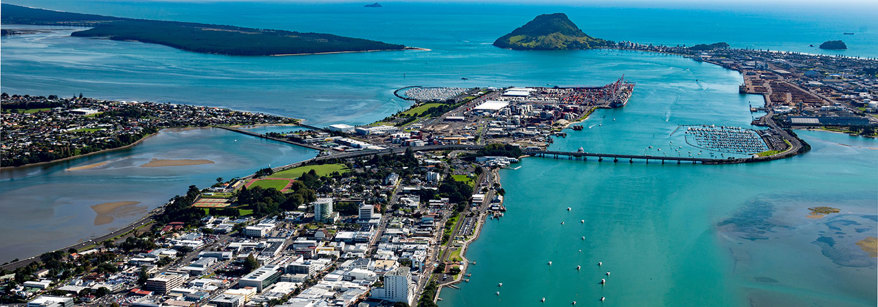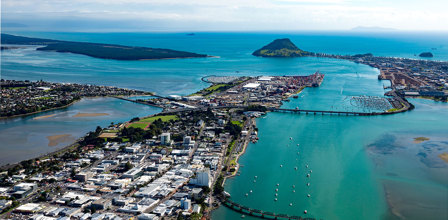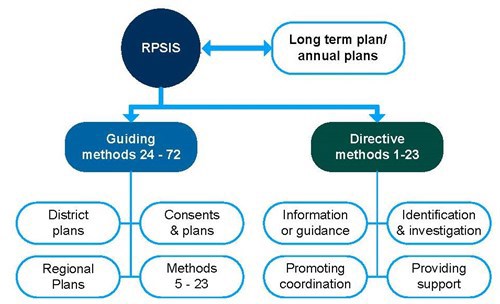Implementing the Iwi Resource Management Provisions of the RPS
Implementation of the RPS Iwi Resource Management policies and methods is ongoing and reflects the nature of these provisions needing to be applied on a case by case basis in resource management decisions making processes.
An initial appraisal of the RPS identified the need to undertake regular iwi perception surveys and implement Method 44 ‘Developing mauri models’ as a discrete project in its own right. At the 12 December 2017 Komit Maori meeting approval was given to deploy the second biennial iwi perception survey and commence the development of a Mauri Model Toolbox. A copy of the Komiti Māori 12 December 2017 report can be viewed here.
Mauri Model Toolbox – Method 44
An initial assessment of the RPS in 2016 identified specific methods of implementation that were projects in their own right and needed to be prioritised for implementation. This included Method 44: Developing Mauri Models which states:
“Work with tangata whenua in the development of ways to assess the mauri of natural resources with the intent that such methods are implemented in regional plans for monitoring consented activities, the state of the environment and the efficiency and effectiveness of plan provisions, where these involve matters of significance to Māori”.
The Te Hihiri team at Boffa Miskell Ltd were engaged to develop a robust methodology for assessing RPS Method 44 in relation to natural resources in future regional plan changes and regulatory frameworks (i.e policies, methods and rules) where these involve matters of significance to Maori.
A literature review was undertaken which collated a range of existing mauri assessment models used throughout the country to assess the mauri of natural resources in relation to matters of significance to iwi.
Fourteen consultation hui with tangata whenua from across the region were held. Boffa Miskell subsequently prepared a report summarising general findings from the meetings which proposes a potential framework Council could use for assessing mauri. Overall the report indicates a number of common themes when assessing mauri. A key principle is that kaitiaki who are the mana whenua or ahi kā of the area were the first point of engagement for the assessment of mauri of any natural resources. Any mauri framework should be developed with the support assistance and guidance from mana whenua.
The Boffa Miskell report makes a number of recommendations based on the consultation undertaken during the project. The recommendations identify key elements or principles a mauri model framework should entail, and what matters or actions need to be considered to further develop a Mauri framework. For example these include developing a pool of iwi technical advisors and developing at least three mauri pilot projects to test and assess the mauri framework. The report recommends the initial basis for developing a framework to use for assessing mauri in relation to applications for resource consent, monitoring consented activities and monitoring the efficiency and effectiveness of plan provisions where they are of significance to iwi. The report identifies more time and energy is required to further develop a framework.
Council propose developing a toolbox of examples of existing models and frameworks used to assess the mauri of natural resources to be made available on Council’s website. The toolbox can be refined over time as further examples are developed that can be shared with interested iwi and hapū. The toolbox approach is a pragmatic means of implementing the intent of Method 44 whilst acknowledging different iwi and hapū will have their own preferences for how they assess the mauri of natural resources.
If you are interested in sharing or promoting an example of a mauri assessment for inclusion in the Mauri Model Toolbox please contact: Nassah Steed, Programme Leader Statutory Policy on 0800 884 880.
Iwi Perceptions Survey
The results of the second biennial iwi perceptions survey under the Regional Policy Statement are now available. Komiti Māori approved making the results publicly available on Council’s website at their 22 August 2018 hui. See the report here.
The primary purpose of the iwi perceptions survey is to contribute to the Regional Policy Statement monitoring and evaluation. This is a requirement of the RPS and sections 35 and 79 the Resource Management Act 1991. The survey was open to any iwi, hapū, whānau or Maori land trust representative in the region. The survey is intended to help Toi Moana better understand the extent to which kaitiaki practitioners consider the RPS Iwi Resource Management objectives are being achieved.
For consistency purposes the survey replicates the first iwi perceptions survey undertaken in 2015 and continues to include questions regarding iwi/hapū and whanu experiences with Regional Council’s resource consents processes. A summary of the results from the first iwi perceptions survey undertaken in 2015 can be found here.
RPS Iwi Resource Management provisions monitored include objectives, policies and methods relating to:
- Consultation
- Kaitiakitanga
- Development of multiple owned Māori land
- Partnership and co-management agreements
- Iwi and hapū resource management plans
- Maintaining and enhancing the mauri of water, land, air and geothermal resources; and
- Recognition and provision for the relationships of Māori and their ancestral taonga.
Twenty six persons responded to the survey, with most involved in a resource management capacity for their relevant iwi, hapū, whānau or land trusts. some interesting results are included below:
- 80% of respondents think the mauri of natural resources in their rohe has degraded in the past 5 years.
- 74% of respondents agreed that Council provides opportunities for iwi, hapū or kaitiaki involvement in resource management decision making processes. That compares to 60% in the 2016 survey.
- 65% of respondents felt Council considers and responds to kaitiaki advice (same as 2016). In contrast 75% of respondents do not feel cultural advice is reflected in Council’s decisions.
- 44% of respondents think their iwi, hapū or organisation almost always experiences consistent, positive engagement with Council. 33% answered sometimes to this question, with 17% saying once in a while, or rarely.
This is the second of four biennial iwi perception surveys scheduled to occur during the life of the second generation RPS, with the next formal RPS review due in October 2024.
The survey results will be analysed in combination with information collated for other monitoring indicators linked to each Iwi Resource Management objectives. Each successive survey is expected to help build a picture of how iwi or kaitiaki practitioners perceive how well the RPS iwi resource management objectives are being achieved.



